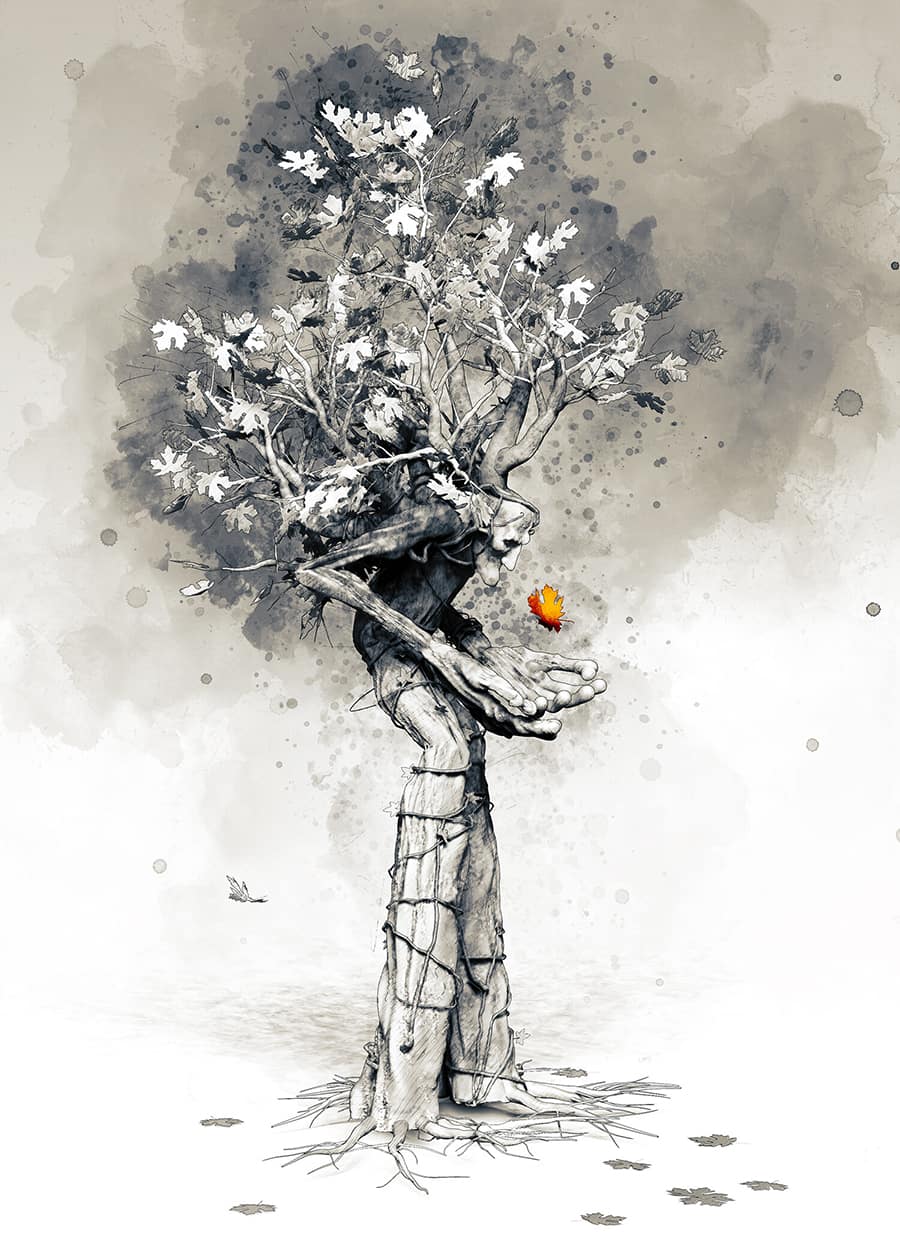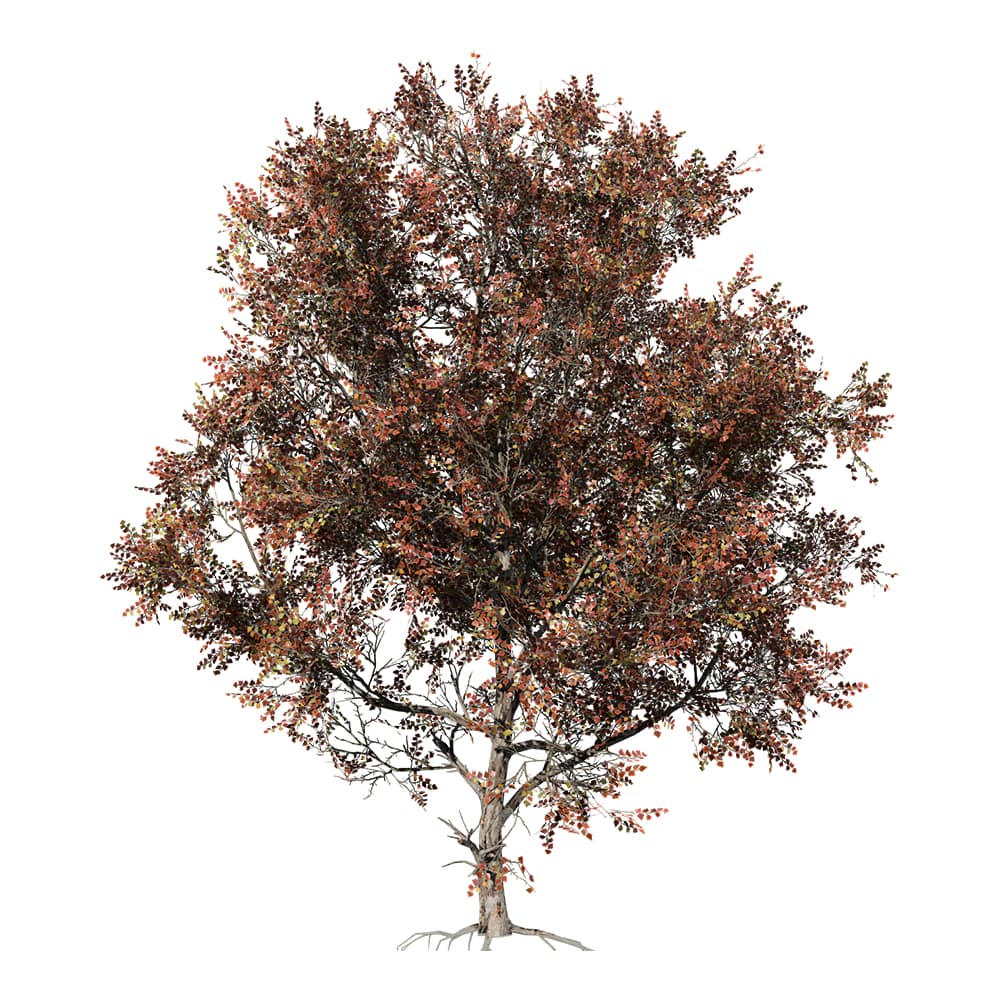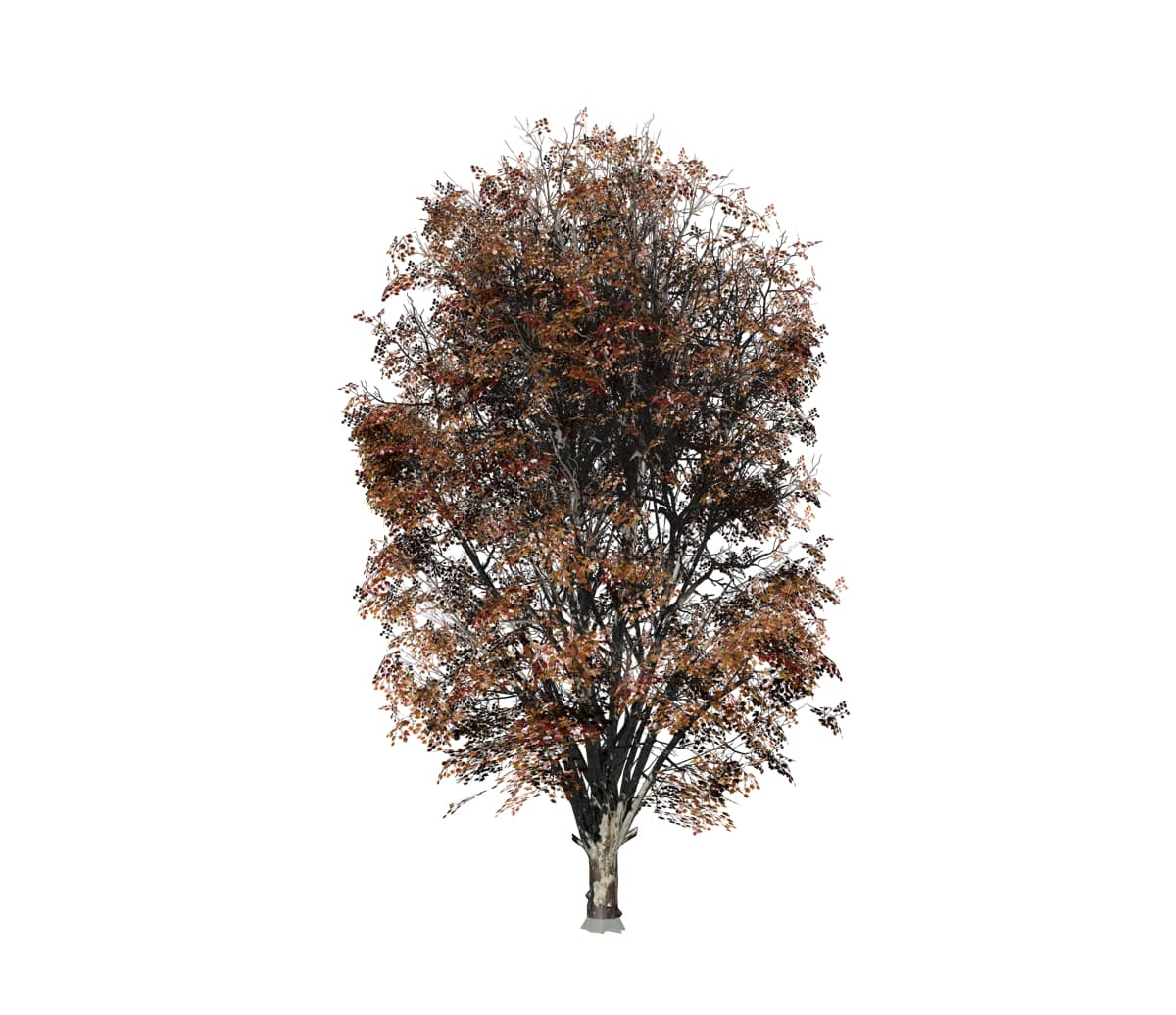When we saw that SpeedTree was one of the tools used to create, “That Time Again,” we had to learn more about PJ Rush and their creative process!
I have no formal art or design training; I had dreamed of being an animator or cartoonist as a kid, but ended up working a string of administrative jobs in the financial services industry. I guess it was easier than the thought of failing at what I loved. It was a real slap in the face when, sometime in my mid-thirties, I realized I could no longer draw a straight line.

I’ve always played with graphics applications and enjoyed design as a sideline (just little jobs for friends or fun.) Then, just before turning forty, I lost three jobs in a year and was diagnosed with some significant health problems. I had literally nothing else on the horizon except to follow my passion: I guess, sometimes, that’s what it takes. I’m in the process of launching a modest venture selling prints and greeting cards. First at some local art venues, then eventually online.

I think of myself as an art hacker: I use whatever tools I can find (often for free or cheap) to compensate for my lack of technical skills. I Kitbash and cobble together illustrations, learning as I go. I’ve had to embrace happy accidents and lean into procedural generation. It used to feel like cheating but now I wouldn’t do it any other way!

My workflow is different every time: I started this piece in Zbrush, building a few quick Zsphere armatures to decide what direction to go in. I often find sketching directly in 3D to be a better fit for the way I think than planning on paper. It takes longer and means I hit a lot of dead ends, but I usually get where I’m going. I knew this was a tree creature–but had no idea what kind of tree or even how to pose him; I tried a few variations.
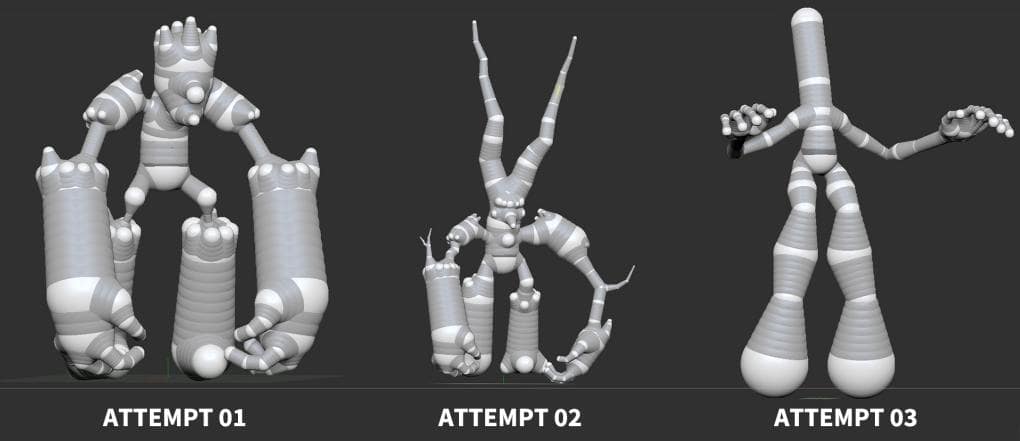
Trees aren’t always as strictly vertical as they seem to our eyes but, in the end, long, straight legs and arms simply read as more “treeish”. I sliced the head off a Genesis 8 Male figure in Daz Studio and stuck it on the body in Zbrush.
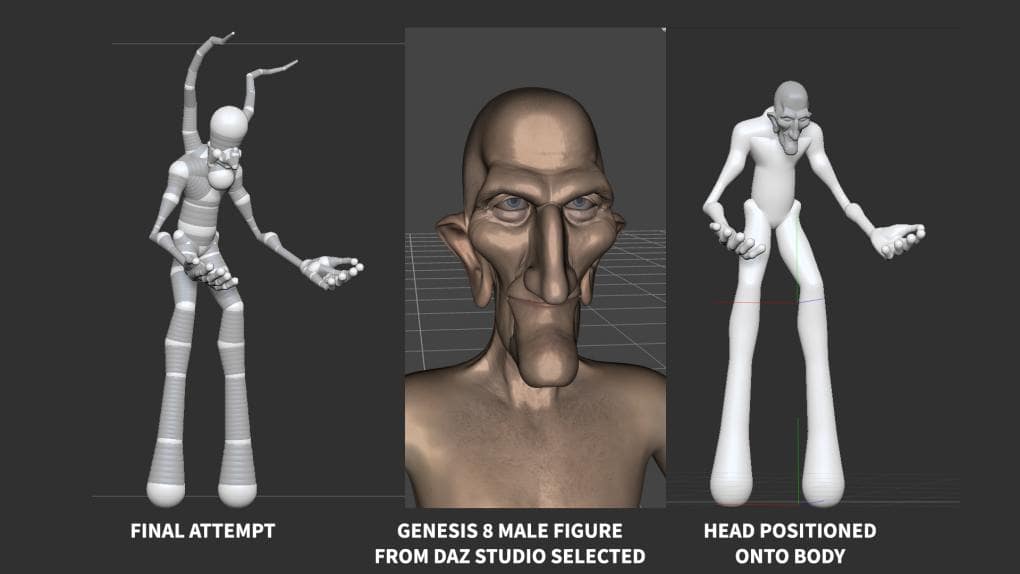
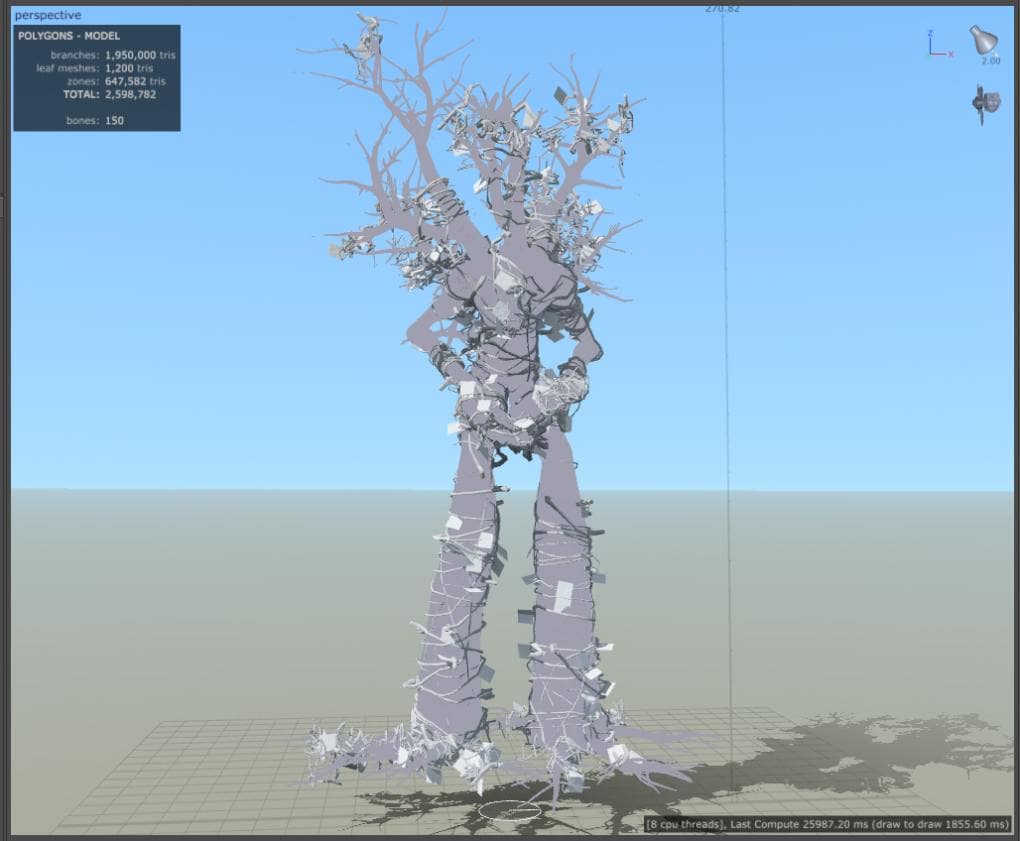
I considered sculpting the branches in Zbrush too but decided that wasn’t practical. This was my first time using SpeedTree; the sheer volume of options was intimidating at first but I played with the parameters until I began to get a sense of them. I imported an .obj of the figure and learned how to grow branches off the geometry. Along the way I discovered mesh forces and knew immediately he needed some vines growing around his limbs. This is maybe my favourite feature!
I imported the results into Zbrush, carefully pruned and shaped them by hand, and added a transparency map to the leaves. Voila: maple. I was going to texture the mesh, but a simple white matcap rendered so nicely I decided against it. By now I had a feel for this gentle fellow’s personality and knew what he had to be doing. I moved the limbs into position and split a few leaves off to suggest an early Autumn scene.
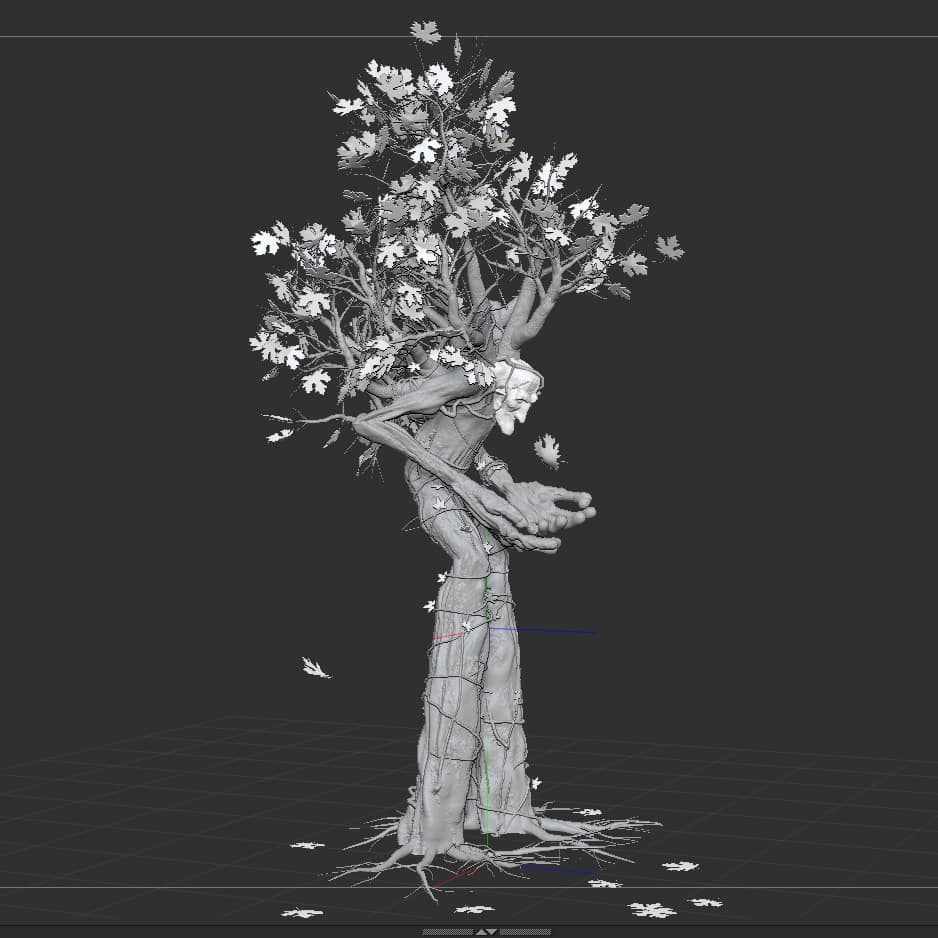
I assembled the Zbrush renders in Photoshop and then phase two began. This is just as important to me as the sculpt, possibly more: I don’t like my illustrations to read as CGI. I have a few go-to Photoshop actions that generate procedural pencil and paint strokes from an image. That’s a start, but the results they produce have no warmth or personality, so I spent another full day adjusting the layers, colour-correcting, and hand-drawing details.
We’d like to say thank you again to PJ Rush for taking the time to answer our questions and wish him the best of luck with his creative endeavors. Keep up with PJ’s work by following him on ArtStation & checking out his website!
If you feel inspired and want to try your hand creating artwork using a similar process, consider trying the free 20-day SpeedTree Cinema modeler evaluation and, if you’d like tree bases to get you started, here are two models that remind us of the gentle character in PJ’s piece.
Sugar Maple
(Games)
This broadleaf is beloved for its sap, durable wood, and its iconic leaves, which, much like the Red Maple, yield a beautiful display in the Fall.

